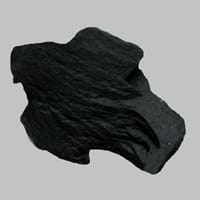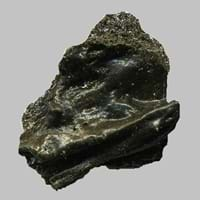Lignite and Tachylite
Definition
Definition
Lignite is a soft brownish coal which shows traces of plants and is intermediate between bituminous coal and peat
Tachylite is a vitreous form of basaltic volcanic glass. This glass is formed naturally by the rapid cooling of molten basalt
History
Origin
France
Iceland
Discoverer
Unknown
Unknown
Etymology
From French, Latin lignum wood + -ite1
From German Tachylite, from tachy- + Greek lutos soluble, melting
Class
Sedimentary Rocks
Igneous Rocks
Sub-Class
Durable Rock, Soft Rock
Durable Rock, Medium Hardness Rock
Family
Group
Not Applicable
Volcanic
Other Categories
Coarse Grained Rock, Fine Grained Rock, Medium Grained Rock, Opaque Rock
Coarse Grained Rock, Fine Grained Rock, Medium Grained Rock, Opaque Rock
Texture
Texture
Amorphous, Glassy
Vitreous
Color
Black, Brown, Dark Brown, Grey, Light to Dark Grey
Black, Dark Brown
Maintenance
Less
More
Durability
Durable
Durable
Water Resistant
No
Yes
Scratch Resistant
No
No
Stain Resistant
No
No
Wind Resistant
No
Yes
Acid Resistant
No
Yes
Appearance
Veined or Pebbled
Glassy
Uses
Architecture
Interior Uses
Not Yet Used
Decorative Aggregates, Interior Decoration
Exterior Uses
Not Yet Used
As Building Stone, As Facing Stone, Garden Decoration, Paving Stone
Other Architectural Uses
Not Yet Used
Curbing
Industry
Construction Industry
for Road Aggregate, Steel Production
Cutting Tool, Knives, Landscaping, Scrapers
Medical Industry
Not Yet Used
Not Yet Used
Antiquity Uses
Not Yet Used
Artifacts
Other Uses
Commercial Uses
Electricity Generation
Cemetery Markers, Creating Artwork
Types
Types
Xyloid Lignite or Fossil Wood and Compact Lignite or Perfect Lignite
Not Available
Features
Generally rough to touch, Helps in production of Heat and Electricity, Used as fossil fuel
Available in Lots of Colors and Patterns, Clasts are smooth to touch, NA
Archaeological Significance
Monuments
Not Yet Used
Not Yet Used
Famous Monuments
Not Applicable
Not Applicable
Sculpture
Not Yet Used
Not Yet Used
Famous Sculptures
Not Applicable
Not Applicable
Pictographs
Used
Used
Petroglyphs
Used
Used
Figurines
Not Yet Used
Not Yet Used
Fossils
Present
Absent
Formation
Formation
Coal formation takes place due to accumulation of plant debris in a swamp environment. The Coal formation process continues, as peat turns into lignite brown or black coal at increasing heat and pressure.
Tachylite is a fine-grained, hard rock which is a type of metasomatite, essentially altered basalt. It forms with or without crystallization, either below the surface as intrusive rocks or on the surface as extrusive rocks.
Composition
Mineral Content
Not Available
Feldspar, Olivine
Compound Content
Carbon, Hydrogen, Nitrogen, Oxygen, Sulphur
Fe, Mg
Transformation
Metamorphism
No
Yes
Types of Metamorphism
Not Applicable
Burial Metamorphism, Cataclastic Metamorphism, Contact Metamorphism, Hydrothermal Metamorphism, Impact Metamorphism, Regional Metamorphism
Weathering
Yes
Yes
Types of Weathering
Biological Weathering, Chemical Weathering, Mechanical Weathering
Biological Weathering, Chemical Weathering, Mechanical Weathering
Erosion
Yes
Yes
Types of Erosion
Chemical Erosion, Water Erosion, Wind Erosion
Chemical Erosion, Sea Erosion, Water Erosion, Wind Erosion
Properties
Physical Properties
Hardness
1
5.5
Grain Size
Medium to Fine Coarse Grained
Medium to Fine Coarse Grained
Fracture
Conchoidal
Conchoidal
Streak
Black
Vermilion
Porosity
Highly Porous
Less Porous
Luster
Dull to Vitreous to Submetallic
Resinous
Compressive Strength
Not Available
206.00 N/mm2
8
Cleavage
Non-Existent
Not Available
Toughness
Not Available
Not Available
Specific Gravity
1.1-1.4
2.4
Transparency
Opaque
Opaque
Density
800-801 g/cm3
3.058 g/cm3
Thermal Properties
Specific Heat Capacity
1.26 kJ/Kg K
5
0.56 kJ/Kg K
22
Resistance
Heat Resistant
Heat Resistant, Impact Resistant, Wear Resistant
Reserves
Deposits in Eastern Continents
Asia
Bangladesh, Burma, Cambodia, China, India, Indonesia, Kazakhstan, Malaysia, Mongolia, Pakistan, Turkey, Vietnam
Cambodia, Russia, South Korea
Africa
Botswana, Kenya, Morocco, Mozambique, South Africa, Tanzania
East Africa
Europe
Belgium, Bulgaria, England, France, Germany, Greece, Hungary, Kosovo, Netherlands, Norway, Poland, Romania, Serbia, Slovakia, Slovenia, The Czech Republic, Ukraine, United Kingdom
England, Germany, Hungary, Iceland, Scotland, Sweden
Others
Not Yet Found
Hawaii Islands
Deposits in Western Continents
North America
Canada, Mexico, USA
USA
South America
Brazil, Chile, Colombia, Venezuela
Not Yet Found
Deposits in Oceania Continent
Australia
New South Wales, Queensland, Victoria
Victoria
All about Lignite and Tachylite Properties
Know all about Lignite and Tachylite properties here. All properties of rocks are important as they define the type of rock and its application. Lignite belongs to Sedimentary Rocks while Tachylite belongs to Igneous Rocks.Texture of Lignite is Amorphous, Glassy whereas that of Tachylite is Vitreous. Lignite appears Veined or Pebbled and Tachylite appears Glassy. The luster of Lignite is dull to vitreous to submetallic while that of Tachylite is resinous. Lignite and Tachylite are available in black, brown, dark brown, grey, light to dark grey colors. The commercial uses of Lignite are electricity generation and that of Tachylite are cemetery markers, creating artwork.
|
||
|
||
|










